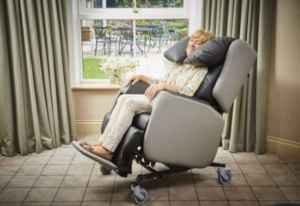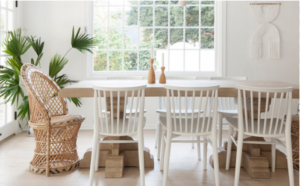Choosing the right dining table can transform your dining area into a functional and stylish space. With countless options in size, shape, material, and design, it can be over whelming to find the perfect fit for your home. This guide provides 14 essential tips to help you select the ideal dining table that complements your lifestyle, space, and aesthetic preferences.
Here are 14 Essential Tips for Selecting the Ideal Dining Table for Your Space
1. Assess Your Space

Before shopping for a dining table, measure your dining area. Leave at least 36 inches of clearance around the table for chairs and movement. For smaller spaces, consider expandable or round tables to maximize usability without compromising comfort.
2. Determine Your Seating Needs

Consider how many people you regularly host. A rectangular table is great for larger gatherings, while a round table fosters intimate conversations and works well for smaller groups.
3. Match the Table to Your Dining Room’s Style

Your dining table should align with your room’s overall design. For a modern aesthetic, choose sleek tables with clean lines. Rustic spaces benefit from natural wood or farmhouse-style tables, while glass or metal tables complement contemporary settings.
4. Select the Right Shape
- Rectangular Tables: Perfect for long, narrow rooms and large gatherings.
- Round Tables: Great for small spaces and creating a cozy atmosphere.
- Square Tables: Ideal for square rooms and promoting a balanced look.
- Oval Tables: A compromise between rectangular and round, offering versatility.
5. Choose a Material That Suits Your Lifestyle
- Wood: Durable and timeless, but may require maintenance to prevent scratches.
- Glass: Opens up smaller spaces but can show fingerprints and scratches.
- Metal: Sturdy and modern but may feel cold in traditional settings.
- Marble: Luxurious but heavy and high-maintenance.
6. Consider Extendable Options
If you entertain frequently but have limited space, an extendable dining table offers flexibility. These tables come with leaves or panels to expand the seating capacity when needed.
7. Focus on Table Height
Standard dining tables are typically 28-30 inches high. Ensure the table pairs well with your chairs, leaving enough legroom and comfortable seating.
8. Balance Proportions
Choose a table proportional to the size of your dining room. Oversized tables can make small spaces feel cramped, while too-small tables can look lost in larger rooms.
9. Prioritize Comfort
Comfort is crucial for long meals and gatherings. Ensure the chairs fit comfortably under the table, with enough space for legs and elbows.
10. Think About Maintenance
Select a table that fits your maintenance preferences. For example, wood and marble may require more upkeep, while laminate and metal are low-maintenance options.
11. Evaluate Your Budget
Dining tables come in a range of prices. Set a realistic budget and explore options within your range, considering the quality, durability, and style.
12. Look for Multi-Functional Designs
If you’re short on space, consider a dining table with built-in storage or one that doubles as a workspace. These options maximize functionality without compromising design.
13. Test Before You Buy
Whenever possible, test the table before purchasing. Check for sturdiness, wobbling, and the quality of materials. Ensure it meets your comfort and aesthetic requirements.
14. Plan for Longevity
Choose a table with a timeless design and durable material that can withstand years of use. Investing in quality may save you money in the long run.
Conclusion
Selecting the perfect dining table requires careful consideration of your space, style, and needs. By following these 14 essential tips, you can find a table that enhances your dining area and meets your practical and aesthetic goals. Take your time, evaluate your options, and invest in a piece that you’ll cherish for years to come.
